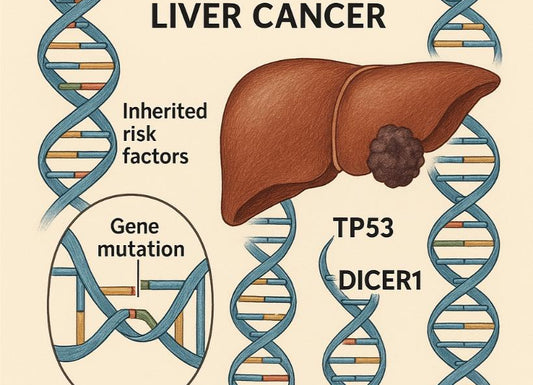What Are the Best Gestational Diabetes Snacks to Keep Blood Sugar Stable?
 Written By
Jaclyn P. Leyson-Azuela, RMT, MD, MPH
Written By
Jaclyn P. Leyson-Azuela, RMT, MD, MPH

Gestational diabetes can make everyday food choices feel complicated, especially when you’re craving for a snack. The right snack can help keep your blood sugar steady, prevent hunger, and support your baby’s growth. So, what are the best gestational diabetes snacks? Store-bought options can be safe if labels are checked for sugar and carb limits. This guide will help explain how to choose balanced snacks that work for your glucose goals while nurturing the life within. You’ll also learn how at-home testing tools can help confirm what foods keep your numbers stable.
Key Insights
-
Snacks that combine protein, healthy fats, and complex carbs help stabilize blood sugar.
-
Eating every 2–3 hours prevents glucose swings and hunger spikes.
-
Aim for snacks under 15g of carbohydrates per serving.
-
Low glycemic index foods are best for long-lasting energy.
-
At-home urine or glucose test strips show how your snacks affect your readings.
-
Safe sweet snacks include fruit, Greek yogurt, and dark chocolate.
What Makes a Snack Safe for Gestational Diabetes?
Safe snacks for gestational diabetes keep your blood sugar steady between meals. They combine complex carbohydrates, lean protein, and healthy fats to prevent spikes and crashes. The goal is to help you feel satisfied and maintain consistent energy throughout the day.
During pregnancy, your hormones can make your body less sensitive to insulin. This causes blood glucose to rise faster after eating. So, choosing snacks that enable you to have a balanced macros slows down how quickly sugars enter your bloodstream.

Key Principles of a Safe Gestational Diabetes Snack:
-
Combine protein with complex carbs for steady energy
-
Include healthy fats like avocado, nuts, or seeds to support satiety
-
Aim for 10-15 grams of carbohydrates per snack
-
Choose foods with low glycemic index
-
Avoid refined sugar, white bread, and sweetened beverages
Smart Food Pairing Examples
-
Apple slices with peanut butter.
-
Whole-grain crackers with cheese.
-
Greek yogurt with a few almonds.
-
Veggie sticks with hummus.
-
A boiled egg with a slice of whole-grain toast.
Snacks like these help regulate your blood sugar while supporting your baby’s growth. Over time, you will learn which combinations work best for your glucose control and keep your readings stabilized. Testing with at-home urine or glucose strips can help identify if you’ve reached and went beyond your kidney’s threshold for glucose, which is known as ~180 mg/dL. These at-home testings can help you choose the right snack while keeping your blood glucose within range.
What Are Examples of Healthy Gestational Diabetes Snacks?
Healthy gestational diabetes snacks make it easier to manage your glucose numbers throughout the day. They keep you fueled and manage your hunger without resorting to large meals later. You should always focus on portion control, balance, and variety.
Morning Snack Ideas Under 15g Carbs
Morning snacks should include slow-digesting carbs and protein. They set the tone for the day by preventing post-breakfast sugar spikes.
Helpful options include:
-
One small Greek yogurt (unsweetened) with berries.
-
A slice of whole-grain toast with avocado.
-
Cottage cheese with cucumber or tomato slices.
-
A small banana paired with nut butter.
-
Hard-boiled egg with a few whole-wheat crackers.
If you check your glucose testing strip one to two hours later, you’ll notice steadier readings when protein is part of your snack.
Afternoon or Pre-Dinner Snacks
Afternoon snacks help prevent overeating during dinner. Choose balanced snacks that sustain you without overshooting your carb limit.
Examples:
-
Low carb gestational diabetes snacks such as turkey roll-ups with spinach.
-
A handful of nuts or seeds with a cheese stick.
-
Hummus with celery, bell peppers, or carrot sticks.
-
Small smoothie made with unsweetened almond milk, spinach, and a tablespoon of chia seeds.
-
One small apple with almond butter.
These snacks support steady energy and can make blood glucose levels more predictable when you eat dinner.
Bedtime Snacks to Prevent Overnight Highs and Lows
A bedtime snack can reduce fasting glucose levels and prevent nighttime drops. Choose something with complex carbs and protein.
Examples:
-
Bedtime snacks for gestational diabetes like whole-grain toast with cheese.
-
Half a peanut butter sandwich made with whole-grain bread.
-
Greek yogurt mixed with walnuts.
-
Oatmeal with a small scoop of protein powder.
-
A small serving of store-bought snacks for gestational diabetes, like a light string cheese paired with low-sodium popcorn.
Bedtime snacks work best when eaten one hour before sleep. Tracking your morning readings helps identify which combination supports stable fasting glucose.

Can I Have Sweet Snacks with Gestational Diabetes?
Yes. You can still enjoy sweet snacks for gestational diabetes in moderation. The key is choosing natural sources of sweetness and pairing them with protein or fat to slow down your digestion. This keeps your sugar levels within a safe range without feeling deprived.
Best Low-Glycemic Sweet Alternatives
Low-glycemic sweets digest slowly and don’t cause sharp blood sugar rises.
Options include:
-
Safe fruits for gestational diabetes like berries, cherries, or apple slices.
-
Plain Greek yogurt topped with cinnamon and a drizzle of honey.
-
Chia pudding made with unsweetened milk and fruit.
-
A small serving of dark chocolate (70% or higher).
-
Protein balls made from oats, nut butter, and unsweetened cocoa.
These snacks satisfy cravings and maintain good glucose control.
Sugar-Free vs. Naturally Sweetened Options (and Safety in Pregnancy)
Sugar-free doesn’t always mean healthy. Some artificial sweeteners may not be recommended during pregnancy. Look for naturally sweetened options using stevia, monk fruit, or small amounts of fruit sugar.
Important notes:
-
Avoid snacks with aspartame or saccharin unless approved by your doctor.
-
Naturally sweetened snacks with whole fruit or yogurt are better choices.
-
Always pair a sweet snack with a protein or fat source to minimize glucose spikes.
-
Limit packaged “sugar-free” desserts that contain hidden carbs or fillers.
Enjoying a light sweet snack after a meal rather than on an empty stomach can also reduce glucose fluctuations.
When and How Often Should I Snack?
You should snack every 2–3 hours during the day. Consistent small snacks prevent both high and low blood sugar swings. Your doctor or dietitian may suggest adjusting snack timing based on your glucose testing results.
How Snacks Affect Fasting vs. Postprandial Readings
Snacks can directly influence your blood glucose readings before and after meals.
-
Eating balanced snacks helps keep fasting levels stable overnight.
-
Skipping snacks can cause your fasting glucose to rise or dip too low.
-
Post-meal snacks that combine carbs and protein help flatten glucose curves.
-
Tracking with at-home test strips helps you see how each snack affects your readings.
Aim for snacks with less than 15 grams of carbs and test consistently to identify which foods work best for your body.

The Role of Glucose Testing and Tracking Tools
Monitoring your response to snacks helps guide better food decisions.
-
Use glucose testing or urine test strips to check your sugar one to two hours after eating.
-
Keep a snack log that includes carb count, time of day, and test result.
-
Identify patterns that lead to stable readings versus spikes.
-
Discuss results with your healthcare provider to fine-tune your plan.
At-home monitoring gives you control over your condition and builds confidence in your eating choices.
Can Store-Bought or Packaged Snacks Be Safe?
Yes, many store bought snacks for gestational diabetes can fit into your meal plan if you read labels carefully. Look for options low in added sugar, moderate in carbs, and rich in protein or fiber.
Reading Nutrition Labels
Knowing how to read nutrition labels gives you an edge when shopping for gestational diabetes snacks. When choosing snacks, you should focus on:
-
Carbohydrates: Aim for less than 15g per serving.
-
Fiber: At least 14g helps slow sugar absorption.
-
Protein: 5–10g supports steady energy.
-
Added sugars: Keep under 5g per serving.
-
Ingredients: Choose items with short ingredient lists and recognizable foods.
Avoid snacks that contain refined flour, corn syrup, or artificial sweeteners. Reading labels can take practice, but it helps you maintain control over your blood glucose.
Top 5 Convenient Packaged Options
You can find plenty of ready-to-eat snacks that align with your meal plan. Here are top-rated choices:
-
Protein snacks for gestational diabetes like low-sugar protein bars.
-
Individual Greek yogurt cups with 10–12g protein and minimal sugar.
-
Nuts and seed mixes without added salt or candy.
-
Whole-grain crackers paired with cheese or hummus.
-
Popcorn made with olive oil, lightly salted, and under 15g carbs per serving.
These snacks fit into busy schedules and can be kept at home, work, or in your car. Always check your glucose response after trying a new brand or product.
Should I Use At-Home Glucose or Urine Test Strips?
Using at-home glucose or urine test strips helps you understand how your body responds to different snacks. It gives you real-time feedback on your dietary choices and helps prevent unexpected highs or lows.
How to Interpret At-Home Test Results
When testing at home:
-
Check glucose 1–2 hours after eating.
-
Ideal readings stay below your doctor’s target range (often 120–140 mg/dL after meals).
-
If your reading is high, adjust your next snack by lowering carb content or increasing protein.
-
If your reading is too low, include a small slow-digesting carb like oatmeal or fruit next time.
-
Use urine strips as a quick backup for identifying glucose presence.
Over time, your testing pattern will reveal which snacks stabilize your blood sugar best.

When to Contact Your Healthcare Provider
There are times when you have to contact your doctor if you notice the following:
-
You see consistent high readings despite balanced eating.
-
You experience frequent lows or feel lightheaded.
-
You’re unsure how to interpret readings.
-
You’re planning to change your meal or snack schedule significantly.
Your provider can review your logs and guide adjustments. Regular communication ensures safe and effective gestational diabetes management.
At-home testing combined with mindful snack planning makes it easier to protect your health and your baby’s development.
Related Resources
Is Gestational Diabetes Genetic? Understanding the Role of Genetics in Gestational Diabetes
Ketones in Urine During Pregnancy: What Every Expectant Mother Should Know
Quick Summary Box
-
Balanced snacks make managing gestational diabetes easier.
-
Choose small portions of complex carbs, protein, and healthy fats to stay energized and maintain normal glucose levels.
-
Examples include Greek yogurt with nuts, apple slices with cheese, and hummus with vegetables.
-
Check your blood sugar regularly using at-home test strips to find the snacks that keep your levels steady and your pregnancy healthy.
References
Glycemic Index of Sweets Complete Chart. (n.d.). Glycemic Index Guide. https://glycemic-index.net/glycemic-index-of-sweets/
Hieshima, K., Sugiyama, S., Yoshida, A., Kurinami, N., Suzuki, T., Ijima, H., Miyamoto, F., Kajiwara, K., Jinnouchi, K., Jinnouchi, T., & Jinnouchi, H. (2020). Elevation of the renal threshold for glucose is associated with insulin resistance and higher glycated hemoglobin levels. Journal of Diabetes Investigation, 11(3), 617–625. https://doi.org/10.1111/jdi.13191
National Institute of Diabetes and Digestive and Kidney Diseases. (2017). Pregnancy If You Have Diabetes | NIDDK. National Institute of Diabetes and Digestive and Kidney Diseases. https://www.niddk.nih.gov/health-information/diabetes/diabetes-pregnancy
Nausea and vomiting in pregnancy. (n.d.). Www.fraserhealth.ca. https://www.fraserhealth.ca/health-topics-a-to-z/pregnancy-and-baby/pregnancy/nausea-and-vomiting-in-pregnancy
Quintanilla, B. S., & Mahdy, H. (2024). Gestational diabetes. National Library of Medicine; StatPearls Publishing. https://www.ncbi.nlm.nih.gov/books/NBK545196/
Reynolds, A., & Mitri, J. (2024). Nutritional Recommendations for Individuals with Diabetes. Nih.gov; MDText.com, Inc. https://www.ncbi.nlm.nih.gov/books/NBK279012/
Righton, O., George, C. V., Cathal O'Hara, Kent, G., Poston, L., Hall, W. L., Flynn, A. C., & White, S. L. (2025). The Influence of Snacking on Glycaemia in Women With Gestational Diabetes Mellitus: A Systematic Review. Maternal and Child Nutrition. https://doi.org/10.1111/mcn.70079
Sample Snacks for Gestational Diabetes and Postpartum Care. (2025). Ca.gov. https://www.cdph.ca.gov/Programs/CFH/DMCAH/Pages/Diabetes/Sample-Snacks-for-Gestational-Diabetes-and-Postpartum-Care.aspx
US FDA. (2024). How to understand and use the nutrition facts label. FDA. https://www.fda.gov/food/nutrition-facts-label/how-understand-and-use-nutrition-facts-label

Jaclyn P. Leyson-Azuela, RMT, MD, MPH, is a licensed General Practitioner and Public Health Expert. She currently serves as a physician in private practice, combining clinical care with her passion for preventive health and community wellness.



